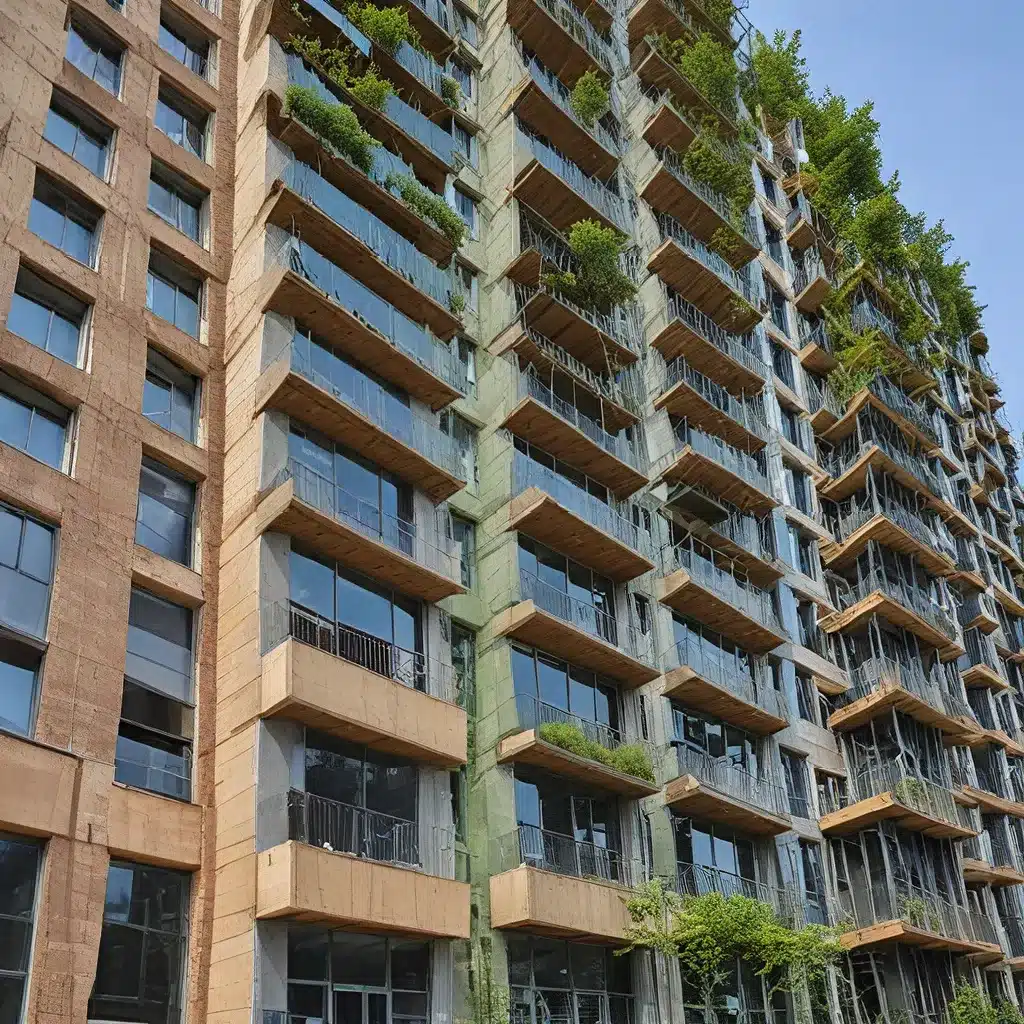
Unlocking the Secrets of Sustainable Construction
As I stood in the middle of the construction site, surrounded by the whirring of machinery and the clanging of tools, I couldn’t help but feel a sense of unease. Sure, the project was progressing smoothly, but deep down, I knew that the traditional methods we were using were taking a toll on the environment.
It was time to rethink our approach. A greener, more sustainable future was calling, and I was determined to answer.
Embracing the Green Revolution
The construction industry has long been a major contributor to environmental challenges, from the extraction of raw materials to the energy-intensive processes involved in building. But the tide is turning, and a growing number of contractors and developers are recognizing the importance of embracing eco-friendly construction techniques.
Green building standards and certification systems have emerged as guiding lights, providing a roadmap for sustainable construction practices. These frameworks, such as LEED (Leadership in Energy and Environmental Design) and BREEAM (Building Research Establishment Environmental Assessment Method), have become increasingly influential, with more and more projects seeking to meet their stringent criteria.
But the journey towards a greener built environment is not without its challenges. As researchers have discovered, the widespread adoption of innovative water conservation strategies can have unintended consequences, such as increased water age and the proliferation of opportunistic pathogens.
Striking a Balance: Navigating the Sustainable Water Conundrum
One of the cornerstones of eco-friendly construction is the implementation of water-saving measures. From low-flow fixtures to greywater recycling systems, the industry has made great strides in reducing water consumption. However, as the study from the Charles E. Via Jr. Department of Civil and Environmental Engineering at Virginia Tech has revealed, these efforts may come with a hidden price tag.
The researchers found that in some green buildings, water age – the time it takes for water to travel through the plumbing system – can be significantly longer than in conventional buildings. This increased water age can lead to a breakdown of disinfectant residuals, such as chlorine and chloramine, allowing opportunistic pathogens to thrive.
“Concentration of 16S rRNA and opportunistic pathogen genus-level genetic markers were 14 orders of magnitude higher in green versus conventional buildings,” the study noted, raising serious concerns about the public health implications of these water systems.
The takeaway? Eco-friendly construction is not a one-size-fits-all solution. We must carefully consider the potential unintended consequences of our sustainable water strategies and find ways to strike a balance between water conservation and public health.
Rethinking the Construction Playbook: Innovative Approaches to a Greener Future
As I delved deeper into the world of sustainable construction, I discovered a wealth of innovative techniques and technologies that are transforming the industry. From the use of recycled and renewable materials to the integration of renewable energy sources, the possibilities for a greener built environment are endless.
One particularly intriguing approach is the concept of passive solar design. By carefully orienting a building and incorporating design elements that harness the power of the sun, contractors can significantly reduce the energy demands for heating and cooling, ultimately lowering the building’s carbon footprint.
But the journey towards sustainability doesn’t stop there. Smart building technologies, such as advanced HVAC systems and intelligent lighting controls, are also playing a crucial role in improving energy efficiency and reducing environmental impact.
Reading General Contractor, a leading provider of construction services, has embraced these innovative techniques, transforming the way they approach every project. By incorporating sustainable practices and cutting-edge technologies, they’re not only delivering exceptional results for their clients but also contributing to the larger goal of a greener, more resilient built environment.
Overcoming the Challenges: Collaboration, Education, and a Shared Vision
As I’ve learned, the path to sustainable construction is not without its obstacles. From regulatory hurdles to skepticism from traditional-minded stakeholders, the journey can be fraught with challenges. But the rewards of a greener built environment are well worth the effort.
One key to success is collaboration – bringing together architects, engineers, contractors, and policymakers to develop a shared vision and coordinate their efforts. By fostering a culture of innovation and a commitment to sustainability, we can overcome the barriers and pave the way for a more sustainable future.
Education is another critical component. By empowering construction professionals, homeowners, and the general public with the knowledge and tools to embrace eco-friendly practices, we can drive widespread adoption and create a ripple effect that transforms the industry.
A Call to Action: Embracing Sustainable Construction
As I stood on the construction site, the weight of responsibility felt heavier than ever before. But with a renewed sense of purpose, I knew that the time for action was now. We must rise to the challenge, pushing the boundaries of traditional construction and embracing the transformative power of sustainable techniques.
The future of our built environment is in our hands. Let’s work together to elevate eco-friendly construction, one project at a time, and create a greener, more resilient world for generations to come.
Related posts:
No related posts.




